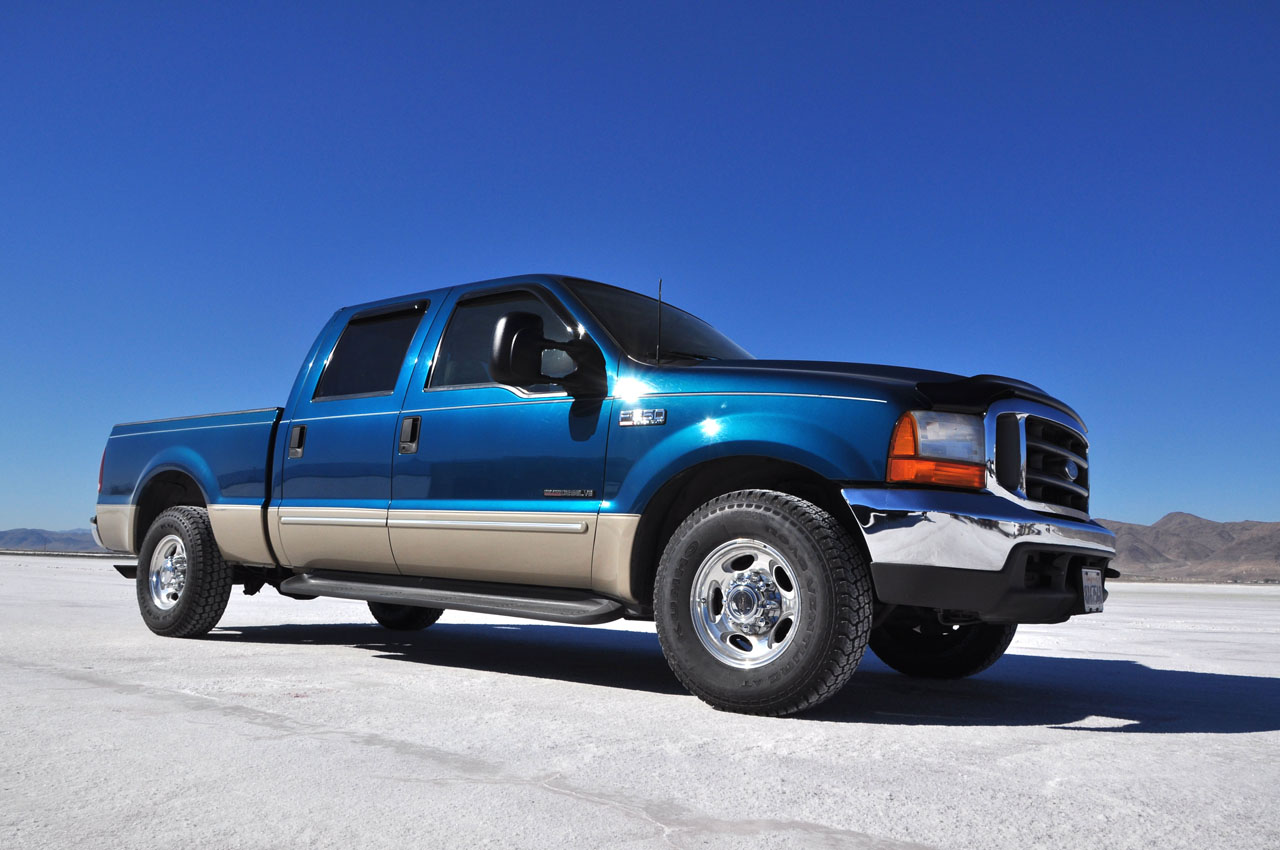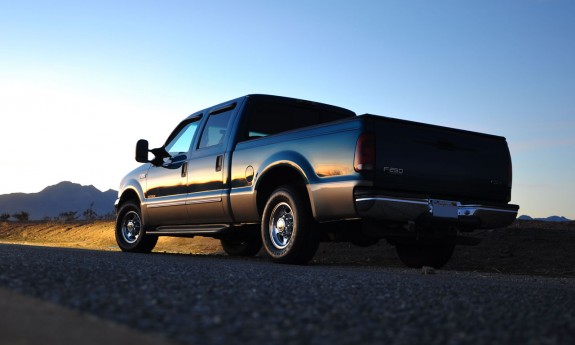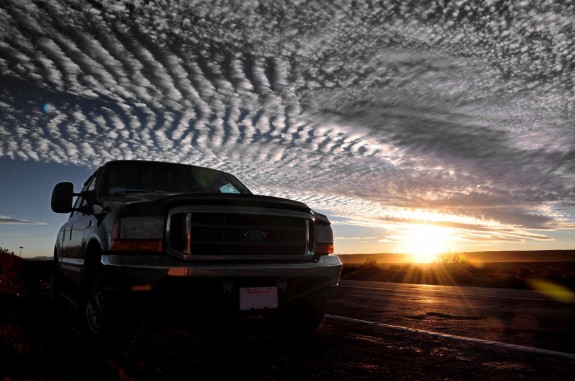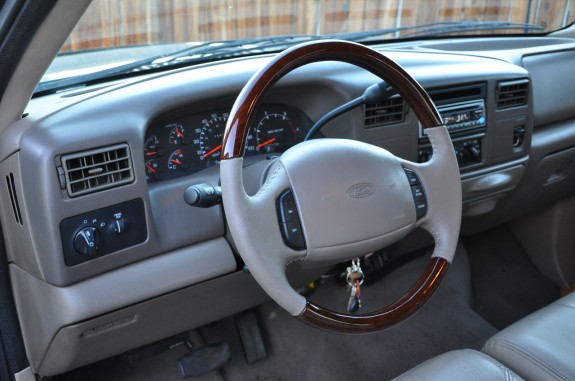Long-Term Test, 2000 Ford F-250: Fixer Upper

The money I saved from not buying a new truck would become real handy as I started bringing the truck up to my standards. My first actions were to address driveability issues. New tires helped keep the truck on the road. ”Necessities” like a new high-flow air filter set up and a tonneau cover fixed some usability issues (the stock filter had a history of letting dirt enter the engine in dusty environments). An older style camshaft position sensor was a rumored quick fix for idle quality issues, as was a high pressure oil crossover between the two cylinder heads. A pseudo fuel return system helped prevent air from getting to the fuel injectors, which quieted the engine down quite a bit. I considered these modifications to be money well spent, considering that they prevent the $5000 engine and the $2000 injectors from becoming useless.

The blue-green paint had deep, beautiful reflections that I had always wanted, but never was able to achieve from the string of light colored cars that I owned.
Apart from that was normal maintenance – oil and filters mostly. Of course, being that the engine is about three times as large as the one in my Honda, everything seemed to cost about three times as much. $45 air filters instead of $13, $10 oil filters instead of $4.99, $20 fuel filters compared to the lifetime unit on my Accord, and 14 quarts of oil vs. 4.5 in the tiny 4 cylinder – it added up real quick. Furthermore, the switch to Ultra Low Sulfur Diesel (ULSD) in 2007 was a cause for concern. The ULSD did not properly lubricate components of the diesel fuel system, so trucks that were fine before the switch now had bad injectors and fuel pumps. I decided to play it safe by using additives in every tank of diesel, since the additives were scientifically proven to prevent wear. It was just another cost that put a hole in my pocketbook.

Taking the truck on a road trip, like this one out to Route 66 in Helendale, CA, is always a pleasure.
Nonetheless, taking the truck on road trips made the extra expense seem trivial. It’s a completely different experience – highways where I’d spent countless hours suddenly looked new. I now understood why vehicles with a commanding view were so popular. Unlike any other vehicle I had driven, the truck would climb and accelerate effortlessly on any mountain pass at highway speeds without needing to downshift. While efficient considering its size, the fuel economy was almost half of what I’d achieve in my Honda. That might seem like a bad thing, but it caused me to slow down and notice things I never did before. Suddenly, I wasn’t always in a rush, which not only produced some beautiful pictures, but also reduced my stress level on road trips. I’m sure the comfy seats had something to do with stress reduction as well.

A new wood/leather steering wheel was intended as a one-time splurge at Christmas time, but instead started a snowball effect.
Then Christmas hit, and I decided to do the unthinkable – voluntarily spend money. A new wood/leather steering wheel along with some OE-style fog lights were delivered in January 2011. I could justify these items because the stock steering wheel had become a wreck of unglued leather, and the fog lights were hooked up to be illuminated whenever the engine was running – a safety feature, as far as I was concerned. Unfortunately, these seemingly small items set the ball rolling, and it never stopped after that.

